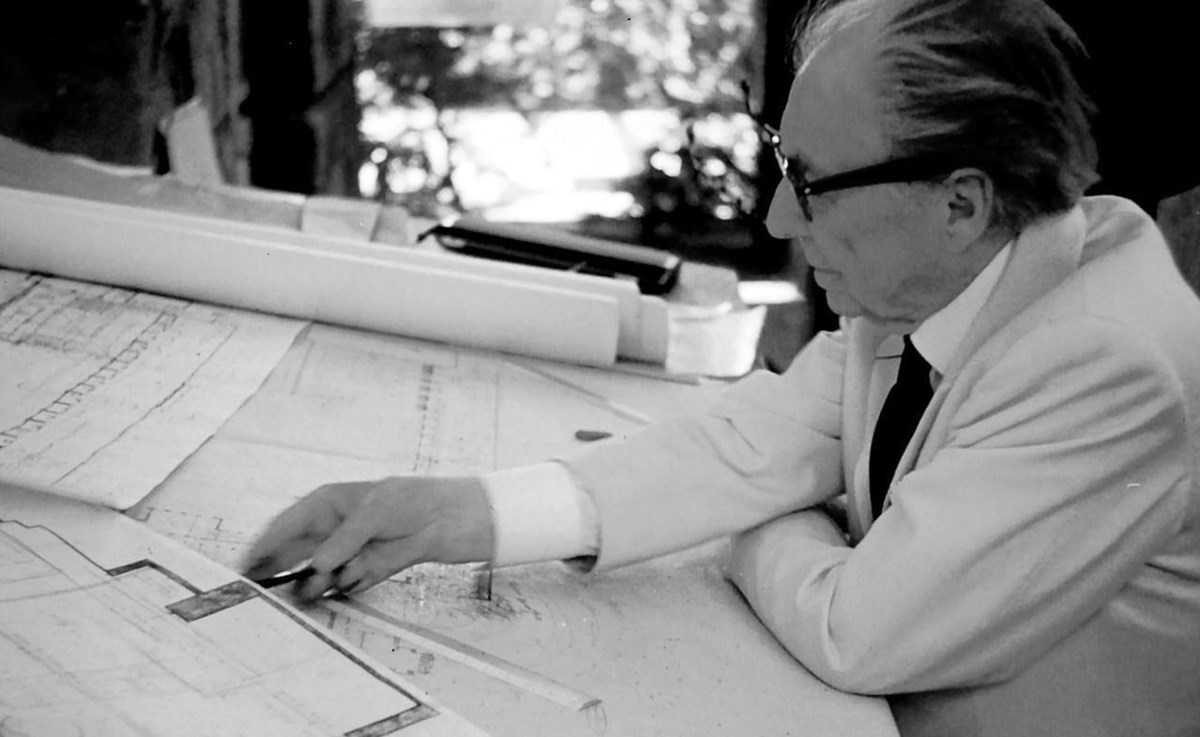Taliesin 1 Armchair
- Designer:
- Frank Lloyd Wright
- Brand:
- Cassina
We don't appear to have any products related to your search term. Please try again.
Shipping and discount codes are added at checkout.
“The mission of an architect is to help people understand how to make life more beautiful, the world a better one for living in, and to give reason, rhyme, and meaning to life.”
Frank Lloyd Wright gained such cultural primacy for good reason: he changed the way we build and live. Designing 1,114 architectural works of all types — 532 of which were realized — he created some of the most innovative spaces in the United States. With a career that spanned seven decades before his death in 1959, Wright’s visionary work cemented his place as the American Institute of Architects’ “greatest American architect of all time.”
Frank Lloyd Wright was born in Richland Center, Wisconsin on June 8, 1867, the son of William Carey Wright, a preacher and a musician, and Anna Lloyd Jones, a teacher, His early childhood was nomadic as his father traveled from one ministry position to another before settling in Madison in 1878.
Wright’s parents divorced in 1885, making already challenging financial circumstances even more challenging. To help support the family, 18-year-old Frank Lloyd Wright worked for the dean of the University of Wisconsin’s department of engineering while also studying at the university. He knew he wanted to be an architect. In 1887, he left Madison for Chicago, where he found work with two different firms before being hired by the prestigious partnership of Adler and Sullivan, working directly under Louis Sullivan for six years.
In 1889, at age 22, Wright married Catherine Lee Tobin. He built his first home, purchasing a wooded corner lot in the Chicago suburb of Oak Park. It reflected Wright’s ingenuity as he experimented with geometric shapes and volumes in the studio and playroom he later added for his ever-growing family of six children.
Home expense were escalating, causing Wright to accept independent residential commissions. Upon Sullivan discovering this in 1893, he charged Wright with breach of contract. It is not clear whether Wright quit or was fired, but his departure left a rift between the two men that was not repaired for nearly two decades.
He opened an office and began his quest to design homes that he believed would truly belong on the American prairie, William H. Winslow House being his first commission. Some of Wright’s most important residential works of the time are the Darwin D. Martin House in Buffalo, New York (1903), the Avery Coonley House in Riverside, Illinois (1907), and the Frederick C. Robie House in Chicago (1908).

During an exhaustion-induced extended stay in Europe, away from his family, in 1909, he had two publications of his work and began construction of Taliesin near Spring Green, away from the unwelcome social circles. Wright had established an office in Los Angeles in 1922 but commissions were few.
In 1928, Wright married Olga Lazovich, at this time, little architectural commissions coming his way, Wright turned to writing and lecturing which introduced him to a larger national audience. Not long after, Wright and Olgivanna founded an architectural school at Taliesin, the “Taliesin Fellowship,” an apprenticeship program to provide a total learning environment, integrating not only architecture and construction, but also farming, gardening, and cooking, and the study of nature, music, art, and dance.
In June 1943, undeterred by a world at war, Wright received a letter that initiated the most important, and most challenging, commission of his late career. Baroness Hilla von Rebay wrote asking him to design a building to house the Solomon R. Guggenheim collection of non-objective paintings. Wright responded enthusiastically, never anticipating the tremendous amount of time and energy this project would consume before its completion sixteen years later.
Wright opened his last decade with work on a large exhibition, Frank Lloyd Wright: Sixty Years of Living Architecture, which was soon on an international tour traveling to Florence, Paris, Zurich, Munich, Rotterdam, and Mexico City, before returning to the United States for additional venues. Impressively energetic for man in his eighties, he continued to travel extensively, lecture widely, and write prolifically. He was still actively involved with all aspects of work including frequent trips to New York to oversee construction of the Guggenheim Museum when, in April of 1959, he was suddenly stricken by an illness which forced his hospitalization. He died April 9, two months shy of his ninety-second birthday.